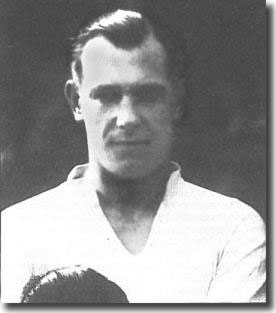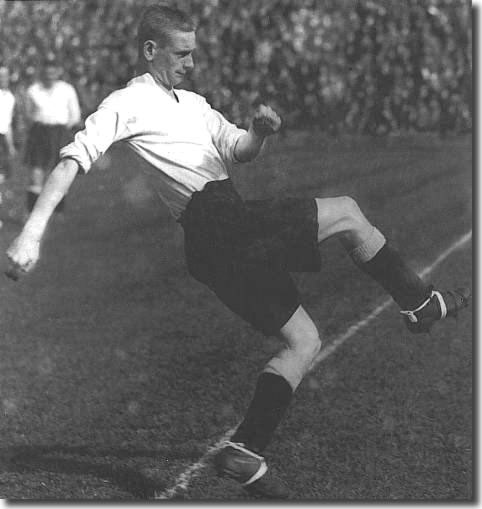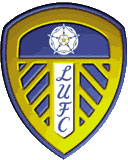 As
the 1932/33 season dawned, Leeds United were getting something of a reputation
for being a yo yo team. After being elected to the Second Division in
1920, they were promoted in 1924, relegated
in 1927, promoted 1928, relegated
again 1931, only to win immediate promotion once
again in 1932. As with many clubs over the years, they were proving
too strong for Division Two, yet not good enough to have more than a temporary
stay in the top flight.
As
the 1932/33 season dawned, Leeds United were getting something of a reputation
for being a yo yo team. After being elected to the Second Division in
1920, they were promoted in 1924, relegated
in 1927, promoted 1928, relegated
again 1931, only to win immediate promotion once
again in 1932. As with many clubs over the years, they were proving
too strong for Division Two, yet not good enough to have more than a temporary
stay in the top flight.
They had reached the dizzy heights of fifth in 1930,
and still had some outstanding individuals such as their brilliant
Edwards-Hart-Copping
half back line and Geordie forwards Tom Cochrane and Billy Furness.
But would a collection of good individuals be good enough to keep
them up this time? Manager Dick
Ray certainly thought so, and there were few personnel changes
during the summer, although 36 year old Bobby Turnbull departed
for Rhyl in September, choosing to retire a year later.
The only voluntary change in positions 1-6 was George Milburn coming
in at right-back with brother Jack switching to the left flank. Jimmy
Potts continued in goal and only injury to Willis Edwards on the opening
day led to any change at half-back. Edwards only played one more game
before Christmas, and Alex Stacey took his opportunity, coming in to support
Ernie Hart and Wilf Copping. Up front Arthur Hydes was the new spearhead,
missing just 3 League games, alongside Furness who was ever present. The
other forward positions were usually filled by any three from Johnny Mahon,
Cochrane, Charlie Keetley and Harry Duggan.
Apart from the loss of Edwards, the opening day saw a 2-0 home defeat
at the hands of Derby County. The second game, away to Blackpool, also
ended in defeat, but United then went on a 14-match unbeaten run. Charlie
Keetley came in to partner Hydes, replacing Joe Firth, after the two opening
defeats, and they struck up a promising partnership, although Keetley
was in and out of the side for most of the year.
The unbeaten run ended with a 3-1 defeat at Newcastle on December 3,
but they didn't lose again until New Year's Eve, going down 5-1 at Derby.
The run had optimists dreaming of the league championship - all the more
so when on Boxing Day, Leeds excelled themselves by winning 2-1 against
former Leeds City manager Herbert Chapman's
Arsenal side at Highbury.
The next day Leeds was seized by football fever. Every train,
every tram, every taxi was overflowing and seemingly every soul
from miles around descended on Elland Road as United and Arsenal
squared up for the return fixture. Spectators began arriving four
hours before kick off. Once, an influx of such a huge number of
supporters would have caused bedlam, but the ground was bigger
now and despite the intense crush as thousands were locked out,
a semblance of order was maintained.
The game attracted 56,988, much the biggest crowd in Leeds' history,
but, the Yorkshire Post observed that the ground was not uncomfortably
full. 'Had proper packing been possible, it could have held many more
especially behind the goal at the Gelderd Road end.' Elsewhere however,
'the crowd overflowed onto the roof of the newly covered part of the popular
side ... scores were seen watching from the roof of an inn ... so great
was the crush that gates had to be opened to relieve some of the pressure.'
The match was a 0-0 draw but no damp squib: 'a game worthy of the occasion,
fought at a tremendous pace'. The Times reported that Leeds 'were
only kept from success by the familiar concentration under  pressure
of eight members of the Arsenal side within or near their penalty area
... the tackling of Hart and the brothers Milburn was too strong for the
Arsenal men'.
pressure
of eight members of the Arsenal side within or near their penalty area
... the tackling of Hart and the brothers Milburn was too strong for the
Arsenal men'.
But both the team and the city of Leeds soon sobered up. On 31
December, Dick Ray's men lost 5-1 at Derby County and for United's
next home match against Blackburn Rovers on 7 January there was
no crushing stampede but an orderly trickle. The crowd was only
14,043: 42,000 football fans had vanished, many never to be seen
again.
Leeds' great potential was underlined when United returned to FA Cup
holders Newcastle in the third round of the competition on 14 January
and came away 3-0 winners thanks to a Hydes hat trick.
They needed a replay before seeing off Tranmere 4-0 in the fourth round,
but went down 2-0 in the fifth at Everton. While their Cup run lasted,
Leeds struggled in the league, failing to win a match after the 3-1 defeat
of Blackburn on January 7 until they came back to form by hammering Liverpool
5-0 on 18 March.
That run ruined any chance of a high finish and the rest of the season
was something of a non-event. They hammered Newcastle again, by 6-1 on
15 April, but suffered heavy defeats at the hands of Chelsea (6-0) and
Bolton (5-0) on the closing day, resulting in an 8th place finish on 44
points. They were at the head of a host of eleven clubs covered by just
seven points. Five points more would have left them fourth, while dropping
nine would have seen them plummet to 20th. In the circumstances, it was
a satisfactory season and Leeds had achieved what they really needed,
consolidation in the top flight. Hydes was top scorer with 19 League and
Cup goals, but Keetley ran him a close second, with 14 in just 24 matches.
Wilf Copping won his first England cap, along with Billy Furness,
in the 1-1 draw with Italy. Copping kept his place for the 4-0
trouncing of Switzerland, but Furness never played again.
Other Football Highlights from 1932/33
- Walsall 2 Arsenal 0. The third round defeat of the champions-elect
by Third Division fodder was the greatest Cup upset of all time,
a result that caused the nation to rejoice. Arsenal were not
a popular side: their players were costly imports and their
style was seen as breakaway smash and grab. And they were a
privileged London side when much of the North and Midlands was
experiencing severe unemployment. The match had been built up
by the press as the Bank of England team versus the little team
that cost £69. The tiny Black Country outfit overturned
all the form books and ended the run of the previous season's
Cup finalists at the first stage
- Tottenham, like Arsenal, went out of the FA Cup to a Third
Division side, Luton. West Ham, who just avoided relegation
from the Second Division, were left to carry the standard for
London, beating two First Division sides on their way to the
semi finals
- Arsenal's Cup disaster didn't affect their league form and the Gunners
won their second title in three seasons, finishing four points clear
of second-placed Aston Villa
- Numbered shirts were worn for the first time in the FA Cup Final,
winners Everton being numbered from 1 to 11 and Manchester City from
12 to 22. Everton won 3-0 with goals from Stein, Dean and Dunn, to complete
a hat trick of successes - the Second Division championship in 1931,
the First Division crown in 1932 and now the Cup
- England won the long awaited showdown at Stamford Bridge on 7 December
with the much vaunted 'Wunderteam', but were given a fright by the skillful
Austrians before they emerged 4-3 victors. Previously Austria had a
number of outstanding wins: versus Scotland 5-0, Germany 6-0, Switzerland
8-1 and Hungary 8-2
back to top












 As
the 1932/33 season dawned, Leeds United were getting something of a reputation
for being a yo yo team. After being elected to the Second Division in
1920, they were promoted in 1924, relegated
in 1927, promoted 1928, relegated
again 1931, only to win immediate promotion once
again in 1932. As with many clubs over the years, they were proving
too strong for Division Two, yet not good enough to have more than a temporary
stay in the top flight.
As
the 1932/33 season dawned, Leeds United were getting something of a reputation
for being a yo yo team. After being elected to the Second Division in
1920, they were promoted in 1924, relegated
in 1927, promoted 1928, relegated
again 1931, only to win immediate promotion once
again in 1932. As with many clubs over the years, they were proving
too strong for Division Two, yet not good enough to have more than a temporary
stay in the top flight. pressure
of eight members of the Arsenal side within or near their penalty area
... the tackling of Hart and the brothers Milburn was too strong for the
Arsenal men'.
pressure
of eight members of the Arsenal side within or near their penalty area
... the tackling of Hart and the brothers Milburn was too strong for the
Arsenal men'.